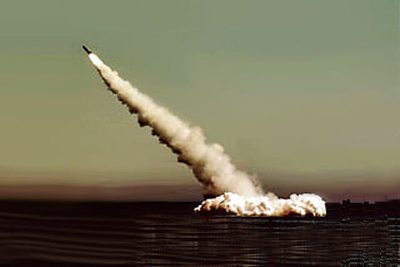Russia on Saturday successfully test fired its new nuclear-capable Bulava intercontinental missile which it hopes will become a key strategic weapon despite a string of setbacks, the Kremlin said.
The missile was fired from the Yury Dolgoruky submarine in the White Sea to its target area the Pacific Ocean at the distance of its maximum range, which is believed to be 8,000 kilometres (4,970 miles).
“Defence Minister Anatoly Serdyukov reported to President Dmitry Medvedev that the latest test of the intercontinental ballistic missile Bulava was successful,” the Kremlin said in a statement.
The success will be a major boost for the Russian armed forces after a similar successful test from the Yury Dolgoruky, part of a new class of Russian submarines, on June 28.
The Bulava (Mace) had become one of the Russian military’s biggest headaches after a series of failed tests in previous years raised questions about its future viability.
According to the Interfax news agency, Russia has now carried out 16 tests of the Bulava, seven of which ended in failure. Russia is planning several more launches this year, including a possible multiple firing of several missiles.
The most embarrassing setback was in late 2009 when the missile’s failure caused spectacular images in the sky above the Norwegian city of Tromso that locals initially put down to a meteor, the northern lights or even a UFO.
Its planned incorporation into the armed forces is part of a wide-ranging military reform aimed at updating the military’s Soviet-era structures and equipment to bring them in line with the demands of modern warfare.
The Bulava can be equipped with up to 10 individually targeted nuclear warheads capable of changing their flight trajectory. It is to be a cornerstone of the nuclear forces strategy up to 2040-2045, according to Interfax.










